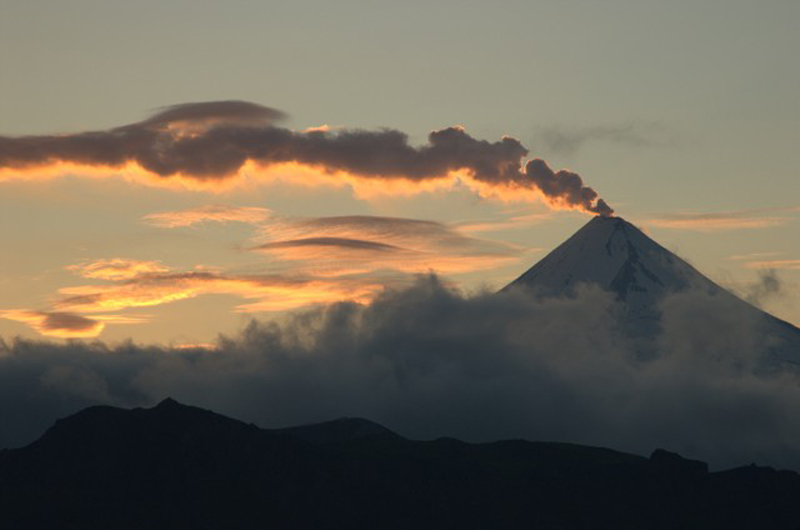Report on Shishaldin (United States) — August 2008
Bulletin of the Global Volcanism Network, vol. 33, no. 8 (August 2008)
Managing Editor: Richard Wunderman.
Shishaldin (United States) Pilot report of ash plume in February 2008
Please cite this report as:
Global Volcanism Program, 2008. Report on Shishaldin (United States) (Wunderman, R., ed.). Bulletin of the Global Volcanism Network, 33:8. Smithsonian Institution. https://doi.org/10.5479/si.GVP.BGVN200808-311360
Shishaldin
United States
54.756°N, 163.97°W; summit elev. 2857 m
All times are local (unless otherwise noted)
Previously reported activity at Shishaldin included the onset of tremor and some unusual earthquakes. For at least one day in July 2004 small ash plumes rose above the summit (BGVN 29:06).
In 2008, only one instance of an ash plume was reported. According to the Anchorage VAAC a pilot reported a small ash plume at an altitude of 3 km on 12 February. The ash plume was not confirmed by satellite imagery or ground observations. AVO did not report any unusual activity during this time. Shishaldin typically emits a relatively steady steam plume, as seen on 2 September 2008 (figure 5).
 |
Figure 5. Shishaldin and a steam plume at sunset taken from a helicopter on 2 September 2008. Image courtesy of Cyrus Read and Alaska Volcano Observatory / U.S. Geological Survey. |
Geological Summary. The symmetrical glacier-covered Shishaldin in the Aleutian Islands is the westernmost of three large stratovolcanoes in the eastern half of Unimak Island. The Aleuts named the volcano Sisquk, meaning "mountain which points the way when I am lost." Constructed atop an older glacially dissected edifice, it is largely basaltic in composition. Remnants of an older edifice are exposed on the W and NE sides at 1,500-1,800 m elevation. There are over two dozen pyroclastic cones on its NW flank, which is covered by massive aa lava flows. Frequent explosive activity, primarily consisting of Strombolian ash eruptions from the small summit crater, but sometimes producing lava flows, has been recorded since the 18th century. A steam plume often rises from the summit crater.
Information Contacts: Alaska Volcano Observatory (AVO), a cooperative program of the U.S. Geological Survey, 4200 University Drive, Anchorage, AK 99508-4667, USA (URL: http://www.avo.alaska.edu/), the Geophysical Institute, University of Alaska, PO Box 757320, Fairbanks, AK 99775-7320, USA, and the Alaska Division of Geological and Geophysical Surveys, 794 University Ave., Suite 200, Fairbanks, AK 99709, USA; Anchorage Volcanic Ash Advisory Center (VAAC), Alaska Aviation Weather Unit, NWS NOAA US Dept of Commerce, 6930 Sand Lake Road, Anchorage, AK 99502-1845, USA (URL: http://www.ssd.noaa.gov/).

